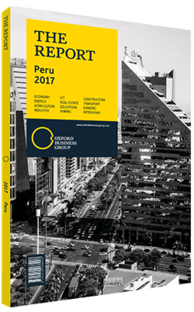Socorro Heysen, Superintendent, Superintendency of Banks, Insurance and Pension Funds Administrators of Peru: Interview

Interview: Socorro Heysen
What is behind the high growth in insurance premiums in recent years? To what extent is this growth sustainable in the medium to long term?
SOCORRO HEYSEN: As of September 2016 net insurance premiums grew to almost PEN8.39bn ($2.49bn), 40% of which comes from general insurance classes, 21% from the private pension system (el sistema privado de pensiones, SPP) insurance, 24% from life insurance, and 15% from car and health insurance. The average growth rate of general insurance in the last 10 years reached 14%. This growth was enhanced by car insurance, which grew 20% annually on average due to the growth of the country’s vehicle fleet, as well as by a 13% average annual growth of large risk insurance, such as earthquake coverage. SPP insurance also experienced an average annual growth of 14% over the last decade.
While title insurance grew due to high mortgage credit and consumption credit activity, growth of individual life insurance was enhanced by higher income per capita and complementary workers’ compensation insurance (seguro complementario de trabajo riesgo, SCTR) in part due to a significant increase of enrollees working in high-risk situations. Regarding the average growth of accident and health insurance – 10% in 10 years – it was mainly caused by a 12% growth in medical assistance insurance. Regarding life insurance, average growth for the last 10 years was 18%, thanks to the 30% growth in title insurance, 26% growth in short-term life insurance and more than 18% growth in SCTR.
The participation of banks and other financial entities in the process of selling insurance products has enhanced growth of placement through operations linked to bank transactions; such as title insurance, fire insurance, car insurance and theft insurance. Finally, the considerable growth experienced by the insurance sector can be explained by a number of additional reasons such as the country’s GDP growth, the steady formalisation of the economy, development in infrastructure projects, the higher purchasing power of Peruvians, the solid growth of the financial system, and the gradual increase of the number of retired people under the SPP. It is also important to consider that in the medium and long term, the insurance sector will continue to grow at a notable rate, taking into account the market penetration gap between Peru and other countries at a similar state of development. There is still significant room for growth in human capital protection insurance and unemployment insurance.
How will the new SPP law benefit enrollees? What motivated revisions to the previous law?
HEYSEN: The SPP has undergone a series of changes in recent years under the premise of providing better social and pension coverage for when Peruvians need it the most – their elder years. The main goal of the changes has been to enhance efficiency and education under a framework of adequate risk management of pension fund portfolios. Efforts to reform the system have not been sufficient enough to integrate more citizens into the system or to increase coverage, competitiveness and pensions.
This situation has led the new administration to propose the creation of a technical commission made up of independent experts in order to analyse all reform options of the integral social protection system; this would include pension coverage among other protection systems. The commission will recommend the option that enables total efficient and sustainable coverage, and one that provides an incentive to formalisation and growth of the economy.
Regarding the pension system, it is important that any new proposals maintain those elements of the system that have allowed for development of protection for the elderly. Likewise, reforms must guarantee some basic rights, such as a minimum pension, and they must introduce regulations regarding the principle of solidarity. The ultimate goal should be to achieve a pension system that is more efficient and covers all Peruvians.
You have reached the limit of premium articles you can view for free.
Choose from the options below to purchase print or digital editions of our Reports. You can also purchase a website subscription giving you unlimited access to all of our Reports online for 12 months.
If you have already purchased this Report or have a website subscription, please login to continue.

